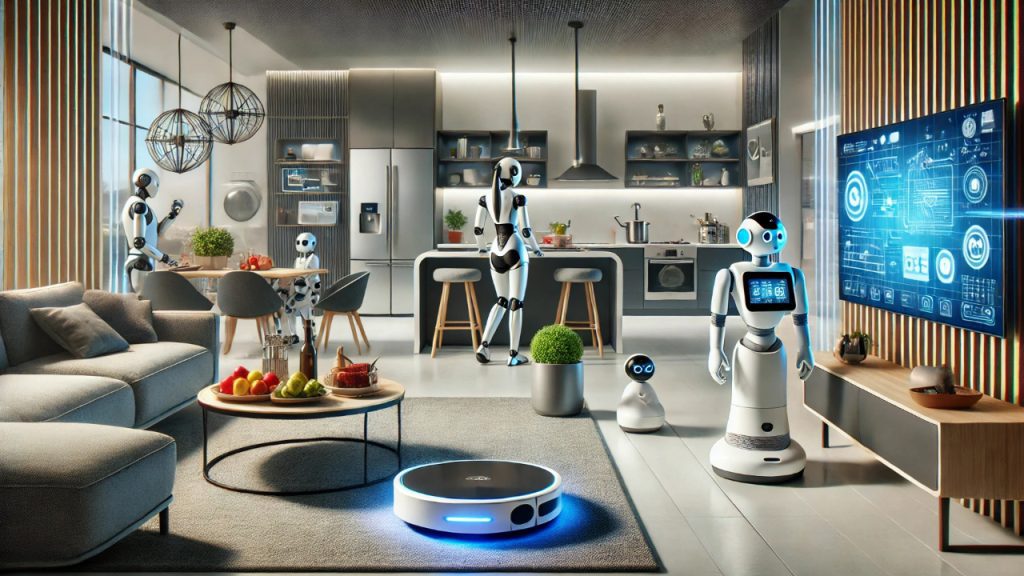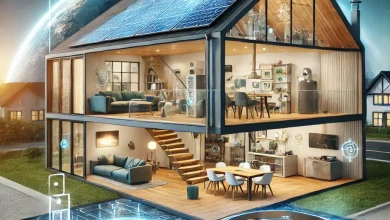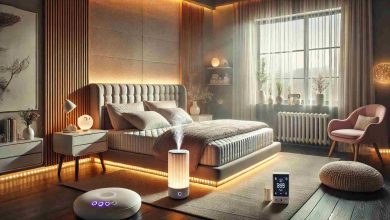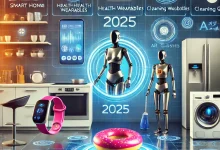The Rise of Smart Home Robots: Are They Ready for the Mass Market?
In Sci-Fi, the concept of robots entering into our daily lives have been existed from a long time but these days the distinctions of fiction and reality are glassy. As A.I. progresses, along with machine learning and robotics, smart home robots are finally entering the consumer market. However, these robots are intended to streamline workloads, assist us, and enhance the comfort of our homes. As the devices further develop and their price tags shrink, some wonder whether they’re truly ready for the mass market.
Robotic vacuum cleaners, personal assistants, and even robotic chefs — smart home robots are starting to transform how we live in our homes. Yet others ask: Will this robot be ready to fulfil the requests and demands of the average consumer and is this need — if it exists — a need we want in an environment that lets it roam, justifying its value?

The Evolution of Smart Home Robots
We already had the idea of automation inside the home. For years, devices like smart thermostats, light bulbs and security cameras were engineered to make daily life more efficient. Still, robots able to take on physical interaction with the world around them are a much newer innovation. Early smart home robots were fairly rudimentary, providing limited capabilities such as vacuuming or mopping floors. Early versions of the robots we now take for granted, like the iRobot Roomba, went a very long way, but were a bit restricted in their functionalities, however they were the bricks for some developments of today.
In the last 10 years, improvements in AI, sensor technologies and connectivity have enabled these robots to make them more intelligent, adaptable and capable. Robots advancements have come a long way, today smart home robots don’t just vacuum. Firms are building robots that can cook, act as companions, maintain security and perform other functions. For instance, LG CLOi and Samsung’s Bot Handy are robots made to help with chores such as setting the table, gathering objects and serving drinks. Despite the fact that these robots are still in development, their potential for the future is quite apparent.
Types of Smart Home Robots
There are several types of smart home robots already available or in development, each serving a unique purpose in the household.
1. Robotic Vacuum Cleaners
The robotic vacuum cleaner is perhaps the most popular and most widely available of all the smart home robots. These robotic devices are made to perform autonomous cleaning of floors, having sensors that allow navigation around furniture and other obstacles. It also has made the robotic vacuum cleaner become an key part of household with such models like Roomba, Roborock and Neato. They can be set to clean at certain times, make their way back to their charging stations whenever necessary, even emptying their dustbins autonomously.
Newer model robotic vacuums leverage AI and cutting edge mapping technologies to plot efficient cleaning paths and change the strength of its suction depending on floor material. Although these robots still need some supervision (like emtpying the dust bin, or dealing with extreme clutter), they have vastly simplified home cleaning for millions.
2. Robotic Personal Assistants
Personal assistant robots are designed to serve a broader range of functions, beyond just household chores. These robots can interact with voice commands, perform tasks like controlling smart home devices, and even provide entertainment or companionship. Robots like Amazon’s Astro and the Temi robot are equipped with screens and cameras that allow them to interact with users through video calls, recognize faces, and deliver items within the home.
While these robots are still in the early stages of development, they represent a promising shift towards creating more personalized and interactive experiences within the home. Some personal assistant robots are also designed to monitor elderly or disabled individuals, helping them with mobility or providing reminders for medication.
3. Robotic Cooks and Food Preparation Assistants
A second place where robots are beginning to change the world is in the kitchen. Fully automated cooking robots remain a novelty at this time, but companies are in the process of designing robots that can help with tasks such as chopping vegetables, stirring ingredients, and even preparing an entire meal. At busy households, these robots can be helpful as they take less time on food preparation.
Probably the first of this kind of robots to cook some food is the Moley Robotics kitchen robot, which is able to make a certain number of recepies from their pre-installed list. Though these robots are expensive and require a lot of customization, they are the harbingers of a future where home cooking can be automated.
4. Security Robots
Security robots are supposed to monitor homes and provide live surveillance. Accordingly, these robots can patrol and capture intruders, then alert the homeowner or the onboard security team. Some, such as the Knight Scope robot, are already deployed in public spaces, including shopping malls and airports. The use of security robots in private residences is still in its infancy, however.
All security robots have cameras, motion sensors, and AI-based algorithms to notice any unusual activities. These technologies can complement traditional security systems by adding additional layers of protection. There are challenges with privacy and cost, but security robots are a major advancement in home protection.
Challenges in Bringing Smart Home Robots to the Mass Market
While the potential of smart home robots is undeniable, there are several challenges that need to be addressed before they are ready for widespread adoption. Some of the most significant hurdles include:
1. Cost and Affordability
Price, one of the biggest hurdles facing mass-market adoption for smart home robots, While simple robotic vacuums are relatively inexpensive, higher-end robots with more capabilities — think personal assistants or robotic chefs — can run into the thousands of dollars. These may well be prohibitively expensive for many consumers, particularly as these devices are still in their early days of development.
To actually get to the mass market, companies will have to cut the production costs and make these robots more accessible to the average person. A reduction in prices is anticipated over time with the progress of technology although we will not see these robots in every household overnight.
2. Privacy and Security Concerns
Smart home robots rely on sensors, cameras, and AI to function, which raises concerns about privacy and security. Many of these robots are capable of collecting sensitive data, such as video footage, audio recordings, and personal preferences. If this data is not properly secured or if the robot is hacked, it could lead to significant privacy breaches.
Consumers may be hesitant to invite robots into their homes if they feel that their personal data is at risk. As the industry develops, manufacturers will need to ensure that robust security protocols are in place to protect users’ information and alleviate concerns about privacy.
3. Integration with Existing Smart Home Ecosystems
One of the key selling points of smart home robots is their ability to integrate with other smart devices in the home, such as lights, thermostats, and security systems. However, creating seamless integration between robots and other smart home technologies is a complex challenge. Incompatible platforms and limited interoperability between devices can make it difficult for consumers to fully utilize the capabilities of their smart home robots.
To truly reach the mass market, smart home robots must work seamlessly with a wide range of other devices and platforms. Manufacturers will need to prioritize compatibility and ensure that their robots can integrate with existing smart home ecosystems without requiring major changes or investments from consumers.
The Future of Smart Home Robots
While there are still obstacles to overcome, the future of smart home robots is promising. As technology continues to advance and costs come down, robots will become increasingly capable and accessible. We may soon see robots performing a wide range of tasks, from cleaning and cooking to providing companionship and enhancing security.
In the next decade, smart home robots may become a standard feature in households around the world, transforming the way we live and interact with our homes. As the industry matures, these robots will become more efficient, affordable, and user-friendly, allowing consumers to take full advantage of their capabilities. Whether or not they are ready for the mass market today, the rise of smart home robots is a trend that is here to stay.
Conclusion
The rise of smart home robots marks a significant milestone in the evolution of home automation. While these robots are not yet ubiquitous in every household, the progress made in recent years suggests that they are well on their way to becoming an integral part of our daily lives. From robotic vacuums to AI-powered personal assistants, these devices are designed to make life easier and more efficient. However, for these robots to reach the mass market, they must overcome challenges related to cost, privacy, and integration with existing smart home ecosystems. With time, these obstacles are likely to be addressed, making smart home robots an increasingly common presence in households around the world.






